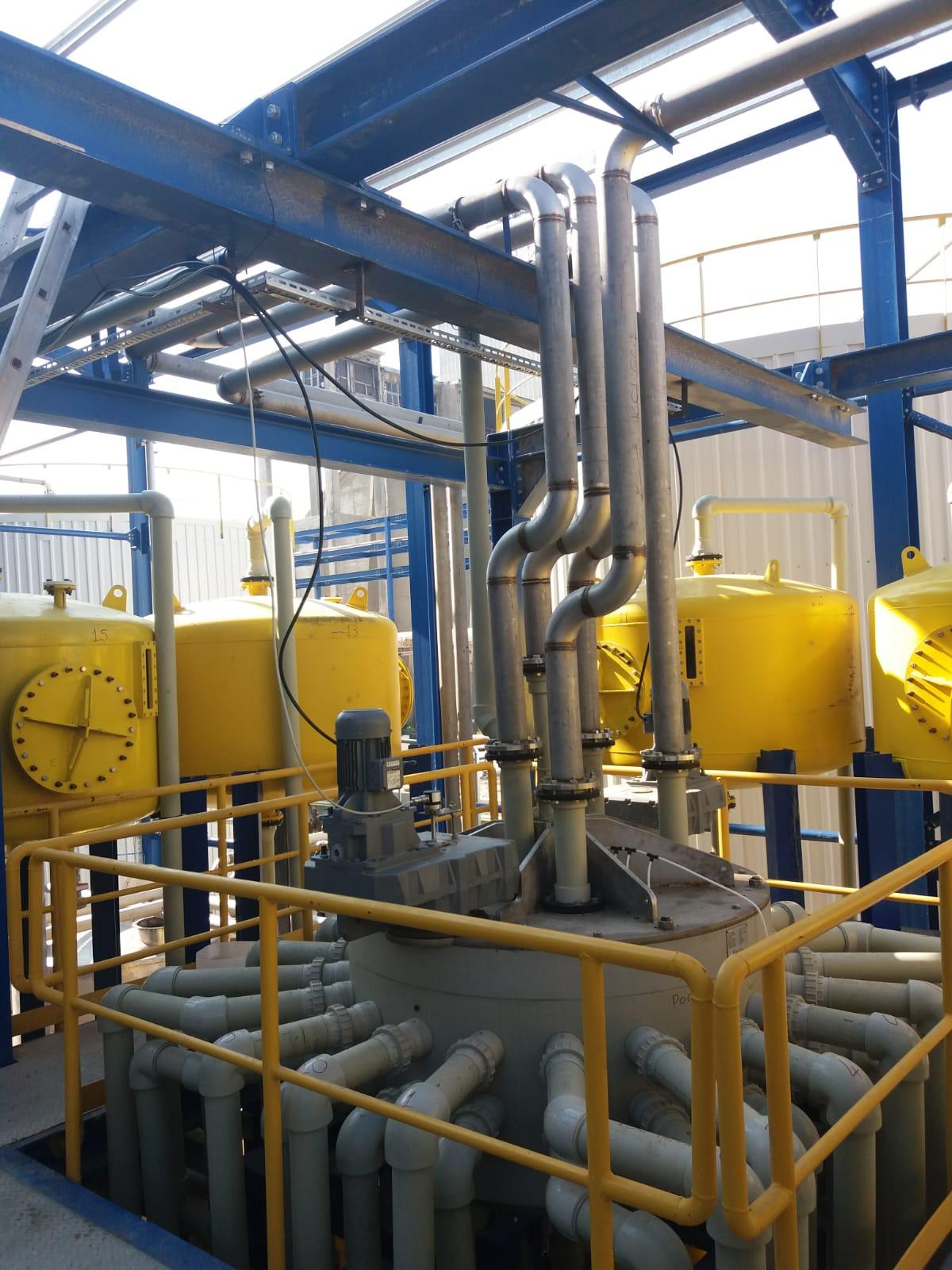Potassium Nitrate
The potassium nitrate ( KNO3) will be produced by ion exchange using standard potassium chloride
(KCl) and nitric acid (HNO3) as the feeds to the ion exchange process. The by-product from this
process is hydrochloric acid (HCl).
The CCIX process for potassium nitrate production comprises four zones: an adsorption or potassium loading zone, an adsorption rinse zone, a regeneration zone, and a regeneration rinse zone. All the zones operate continuously. The strong acid cation exchange reactions that take place are shown below.
R-H + KCl -> R-K + HCl Adsorption
R-K + HNO3 -> R-H + KNO3 Regeneration
The overall process stoichiometry is represented by the reaction:
KCl + HNO3 -> HCl + KNO3
The process stages involved in the Potassium Nitrate process are as follows:
The CCIX process for potassium nitrate production comprises four zones: an adsorption or potassium loading zone, an adsorption rinse zone, a regeneration zone, and a regeneration rinse zone. All the zones operate continuously. The strong acid cation exchange reactions that take place are shown below.
R-H + KCl -> R-K + HCl Adsorption
R-K + HNO3 -> R-H + KNO3 Regeneration
The overall process stoichiometry is represented by the reaction:
KCl + HNO3 -> HCl + KNO3
The process stages involved in the Potassium Nitrate process are as follows:
- Adsorption and Elution Wash zones – The amount of water used requires optimization to ensure that the washes are effective without using excessive water.
- Entrainment Rejection – This step is an internal recycle to maximize product concentration and optimize water usage. Conductivity checks are required to ensure that there is no product carried over to the rinse flow.
- Adsorption – The maximum potassium loading needs to be established to ensure that resin usage is optimized. The product from this stage must also be free of nitrate, so the regeneration rinse zone must be effective.
- Elution – The elution stage needs to be effective at removing all potassium from the resin for collection as KNO3 product. The concentration and stoichiometric excess of regenerant needs to be optimized in order to reduce chemical utilization as much as possible. Optimizing the ER step will also ensure maximum product concentration.

